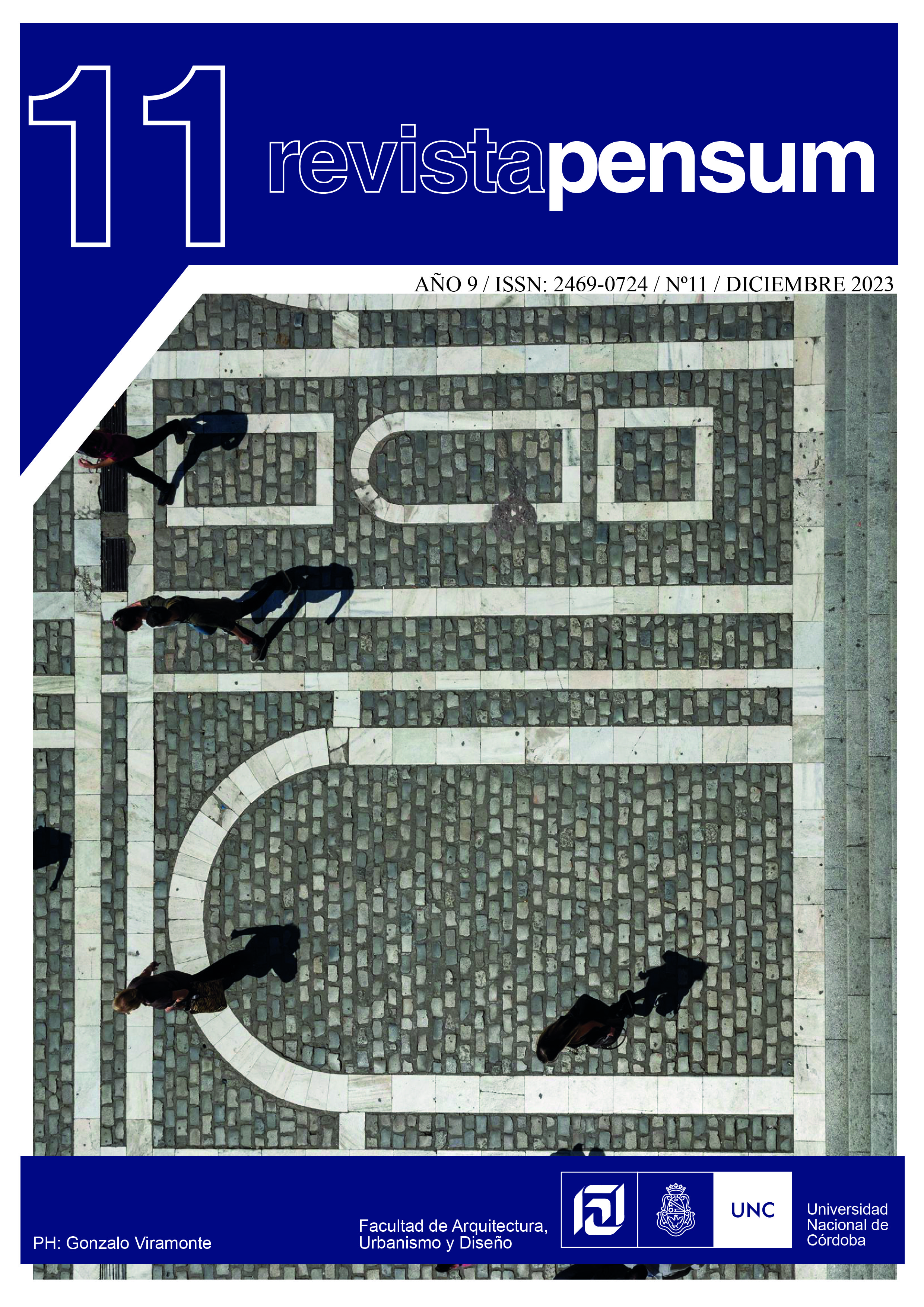The boundaries between the public and the private redefined in the face of sanitary confinement in two urban neighborhoods, Mexicaltzingo y San Antonio, Guadalajara, México
DOI:
https://doi.org/10.59047/2469.0724.v9.n11.40875Keywords:
barrio, cultural interaction, urban spaceAbstract
This document has as its goal to reflect on the meaning of neighborhoods as a space of community life, which includes setting the rules in which neighbors coexist as well as the space they share, particularly speaking on the forms that communities classify, as private or public, the areas within their neighbourhoods.
We will examine these ideas from the proxemics of Edward Hall, the categorization of activities happening either in private or public spaces to establish the limits between one another. Two urban intervention projects will be checked: a pocket park and an archeological site established as a museum, both developed during the pandemic (2019-2021), when private spaces were isolated and public spaces avoided. Both projects created expectations for both neighborhoods, one was full of hope, valued, and had a positive impact on the interaction between neighbors; while the other one just created disagreements and a sense of danger for their privacy, their only defense during the pandemic.
The following document pretends to contribute to the ways on which the urban management approaches to social and cultural dynamics of urban community. Said community impose rules and values to urbanistic actions that technically are fit in any context.
Downloads
References
Añón Abajas, R. M., Ramos Carranza, A. y Torres Pérez, M. E. (2022). Intervención arquitectónica y diseño urbano en contextos históricos. Seminario Internacional de Investigación en Arquitectura y Cooperación Universitaria [Digital]. Universidad de Sevilla. https://dx.doi.org/10.12795/9788447223633 DOI: https://doi.org/10.12795/9788447223633
Becerra, O. y Reyes, R. (2014) El lenguaje contemporáneo del urbanismo. Glosario de términos urbanos. Centro Universitario de Arte, Arquitectura y Diseño-Universidad de Guadalajara
Berroeta, H., Rodríguez Mancilla, H. M y Zumárraga Espinosa, M. (2021) Apego al lugar e identidad de lugar en barrios patrimoniales. CES Psicología, 14(1), 85-99. http://dx.doi.org/10.21615/ cesp.14 DOI: https://doi.org/10.21615/cesp.14.1.7
Duhau, E. (2008) Los nuevos productores del espacio habitable. Ciudades, 20(79). https://biblat.unam.mx/es/revista/ciudades/articulo/los-nuevos-productores-del-espacio-habitable
Echeverría, M. C., Yory, C. M., Gutiérrez, F. Zuleta R, F. B. y Muñoz, E. (2009) ¿Qué es el hábitat?: las preguntas por el hábitat. Facultad de Arquitectura, Universidad Nacional de Colombia Sede Medellín.
González, A. (2007) Quieren desenterrar el Puente de las Damas. https://vlex.com.mx/vid/quieren-desenterrar-puente-damas-80510537
González, J.T. (2001) Añoranzas de Mexicaltzingo. Ediciones Pacífico.
Gravano, A. (2003) Antropología de lo barrial. Estudios sobre producción simbólica de la vida humana. Espacio Editorial.
Hall, E. (1963) A System for the Notation of Proxemic Behavior. American Anthropologist 65(5), 1003-1026. DOI: https://doi.org/10.1525/aa.1963.65.5.02a00020
Hall, E. (1989) La dimensión oculta. Siglo XXI
Instituto de Información Estadística y Geográfica del Estado de Jalisco. (2020) Censo de población y vivienda, Jalisco 2020. https://iieg.gob.mx/ns/?page_id=29022
Left hand rotation. (2012) Gentrificación no es un nombre de señora. Universidad Complutense de Madrid.
Mercado S., J.A. (2013) Espacio público En Becerra M., O.C. El lenguaje contemporáneo del urbanismo. Glosario de términos urbanos. Universidad de Guadalajara
Obras públicas de Guadalajara (2019). Control de obra “Parque de bolsillo Epigmenio y Rayón” Junio 2019. https://enlinea.guadalajara.gob.mx/obras/obrasPublicas/obraDetalle.php?id_obra=20REHZ01059
Inauguran en Guadalajara “Parque de bolsillo” en Epigmenio González y Rayón (2020, noviembre 28). RUMBOMX. https://elrumbo.mx/2020/11/28/inauguran-en-guadalajara-parque-de-bolsillo-en-epigmenio-gonzalez-y-rayon/
Ros-García, J.M. (2022) Variables espaciales para la era de convivencia post-COVID: Proxemia, propiocepción y seclusión. Bitácora Urbano Territorial 32(3), 211-223. https://doi.org/10.15446/bitacora.v32n3.99615. DOI: https://doi.org/10.15446/bitacora.v32n3.99615
Serrano, I. (2022) Iván Bien “Puente de las Damas, un triunfo para el barrio de Mexicaltzingo.. https://ivanbien.com/2022/03/26/puente-de-las-damas-un-triunfo-para-el-barrio-de-mexicaltzingo/
Valera, S. (2010) Identidad y significado del espacio urbano desde una perspectiva psicosocioambiental. Arquitectonics, 19-20, 125-126. https://upcommons.upc.edu/bitstream/handle/2117/120934/9788476539545-06.pdf?sequence=1&isAllowed=y
Vargas S., R. (2021) Construir identidades en el espacio urbano: el caso de la colonia Chapalita. Colegio de Jalisco.
Published
How to Cite
Issue
Section
License
Copyright (c) 2023 María Estela Guevara Zárraga

This work is licensed under a Creative Commons Attribution-ShareAlike 4.0 International License.
Authors who publish in this journal agree to the following terms:
a. Authors retain copyright and guarantee to the journal the right to be the first publication of the work as well as licensed under a Creative Commons Attribution-ShareAlike 4 license.
b. Authors may separately establish additional agreements for non-exclusive distribution of the version of the work published in the journal (e.g., placing it in an institutional repository or publishing it in a book), with an acknowledgement of its initial publication in this journal.
c. Authors are permitted and encouraged to disseminate their work electronically (e.g., in institutional repositories or on their own website) before and during the submission process, as this may result in productive exchanges, as well as earlier and greater citation of published work (See The Effect of Open Access).
d. 4.0 International Creative Commons Attribution-ShareAlike 4.0 License.












